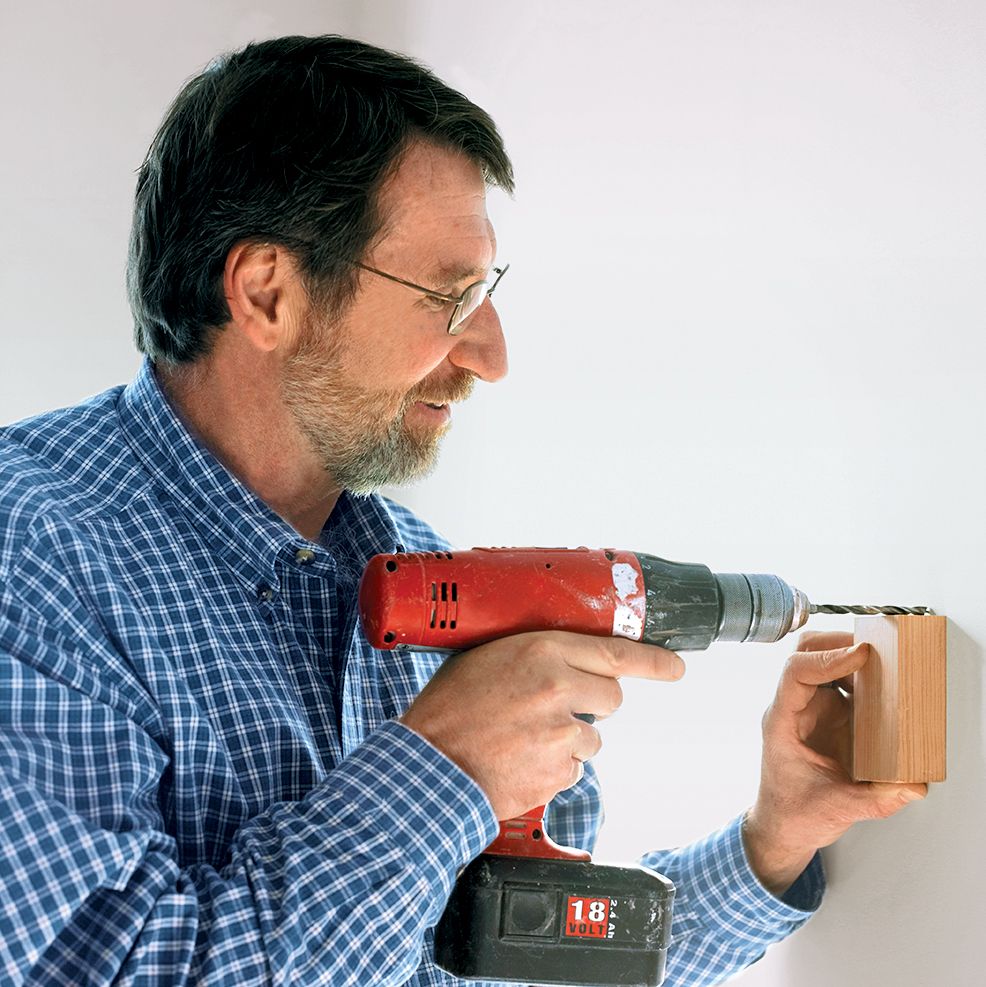Bit Guides
There’s more than one way to drill a hole perfectly perpendicular to a surface. But where there’s room, I like to use a wood scrap as a guide. Cut one end of the scrap square, then, using a combination square, draw a line on that end perpendicular to one face. Just rest the bit flush against the cut end and align it with the line. Now remove the block and drill away.
The same technique also works when drilling holes at an angle: Cut the angle you want into the end of the scrap piece and align the bit with it before you start drilling.
Drilling Angled Holes
If you start drilling into wood at too shallow an angle, the bit will just skip and slide across the surface. The solution? Start by drilling perpendicular to the surface (see slide 2, diagram 1), then, when the bit gets about ½ inch into the wood, stop drilling, and heel the drill over to the angle you want (slide 2, diagram 2). Start at a low speed, then increase it as the bit bites into the wood.
Drill-Bit Stoppers
When you’re drilling holes in the side of a cabinet for shelf supports, or into brick to mount a mailbox, you don’t want to go too deep. Brass depth stops from the hardware store are best if you’re drilling lots of holes, but for only a few, you can use masking tape (slide 3). Wrap a piece around a twist bit at the desired depth, and stop drilling when the edge of the tape just touches the surface. Keep your eye on the tape’s position: A hot bit can melt the adhesive and cause it to slide. The tape trick doesn’t work that well on spade bits and other wide bits. For those, I use a permanent marker, drawing a line on the metal at the intended stopping point.
Sizing a Bit to a Screw
Drilling a pilot hole for a screw is always a good idea. It keeps wood from splitting, increases the screw’s holding power, and makes it easier to drive. You just have to make sure that the pilot hole is the right size for the screw. Here’s how to match a bit to common, straight-shank screws. (For screws that have tapered shanks, drill the pilot hole with a tapered bit.)
Line up the bit and screw, with the bit closer to you. Hold them up to the light. The bit is the right size if it just covers the shank of screw and the screw’s threads are visible on both sides. For pine and similar softwoods, I go with a bit diameter slightly narrower than the screw shank. For hardwoods, I sometimes go a hair wider, particularly if I’m planning to use long screws or drive them by hand.
TOH Tip:
To stop a bit from skittering over metal, dimple the surface first with a center punch. Then add a drop of oil to the dimple to lubricate the bit and keep it cool.

